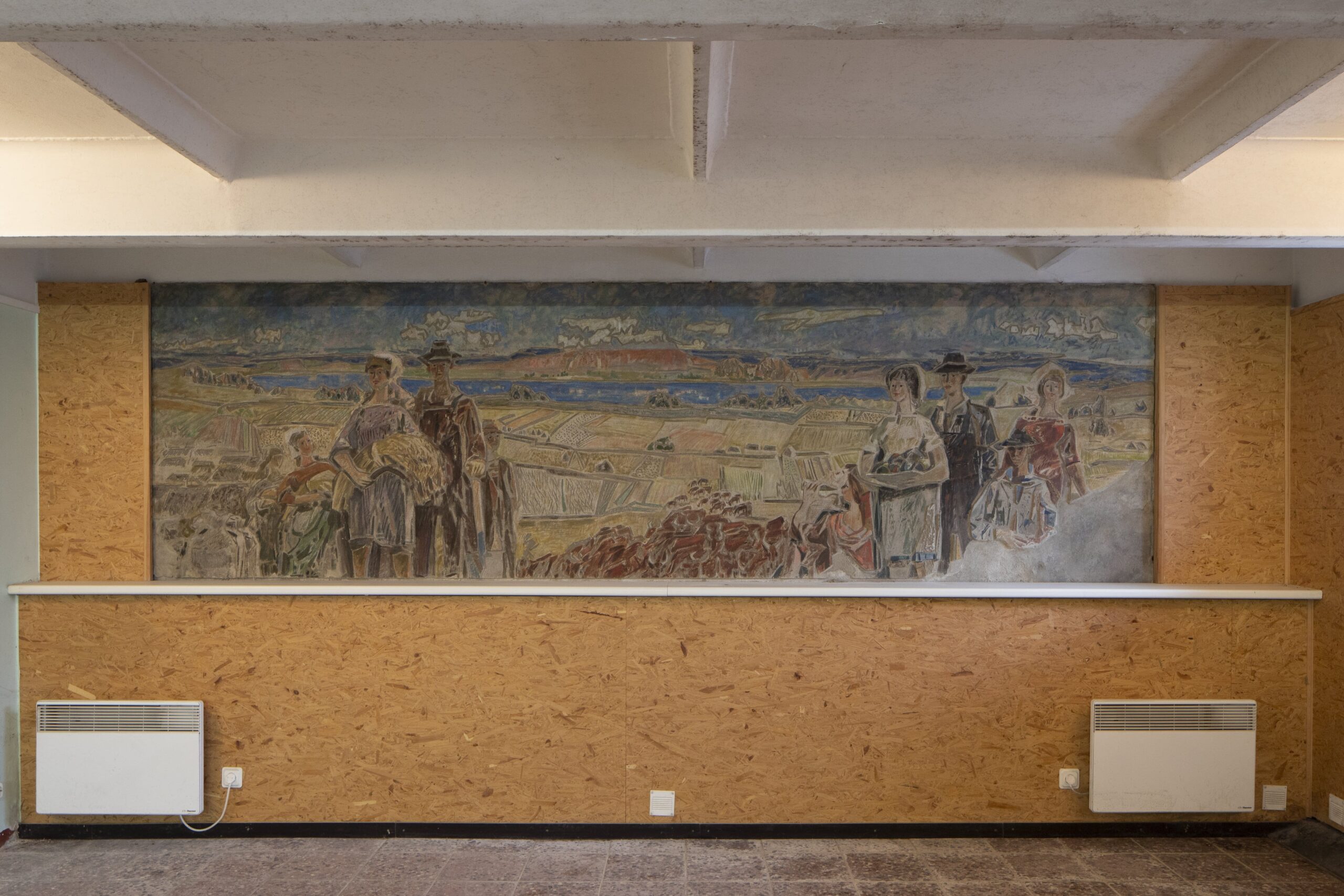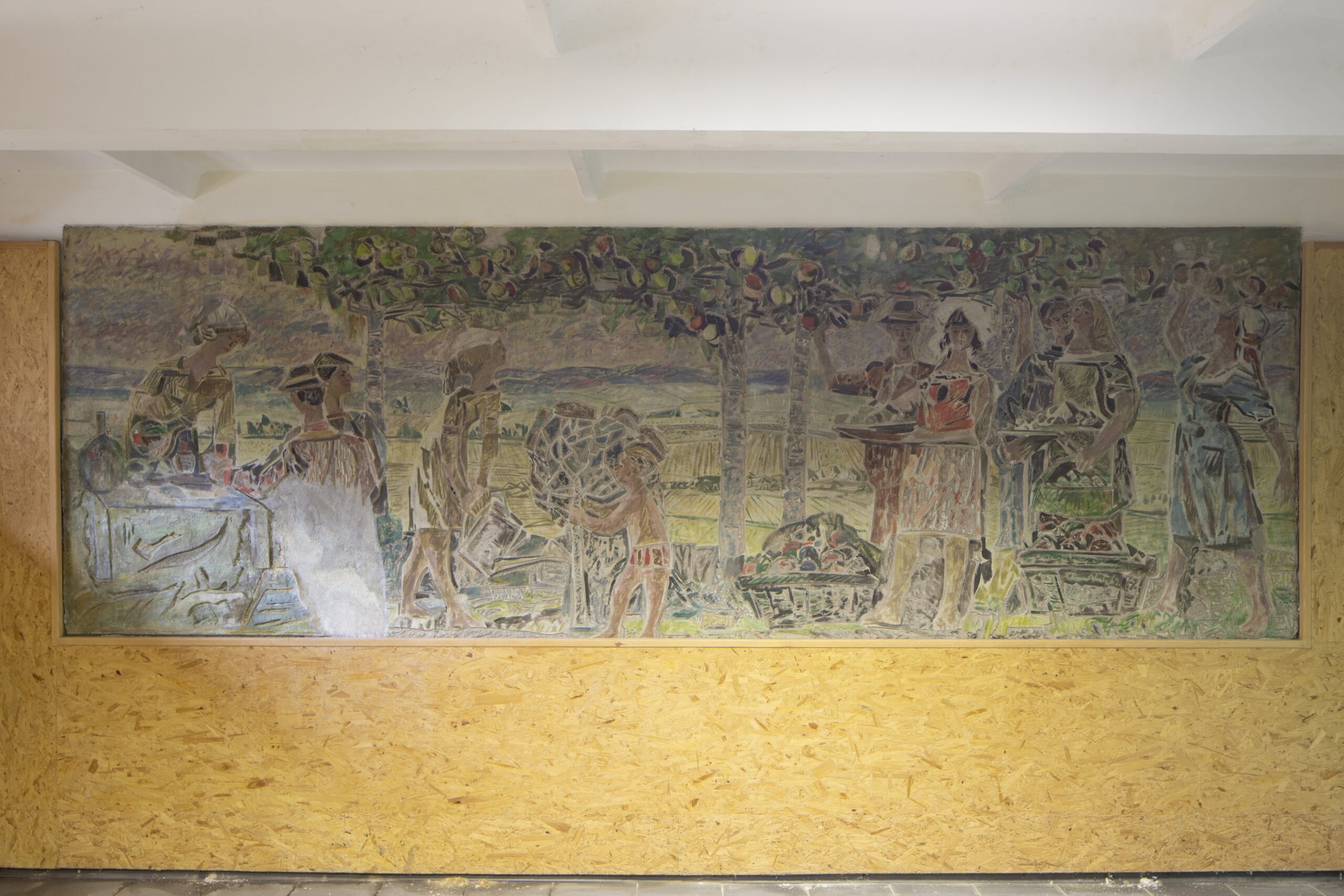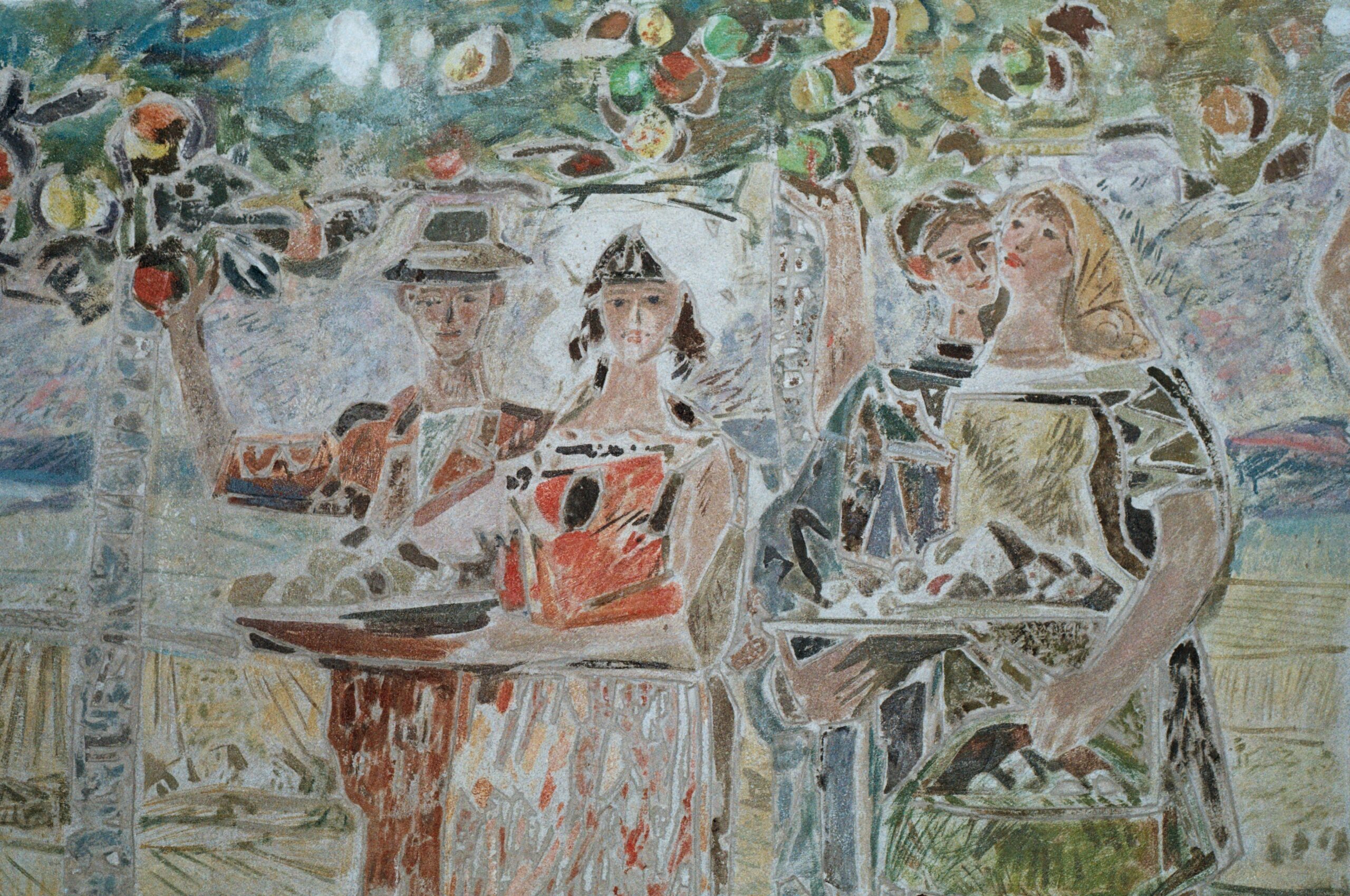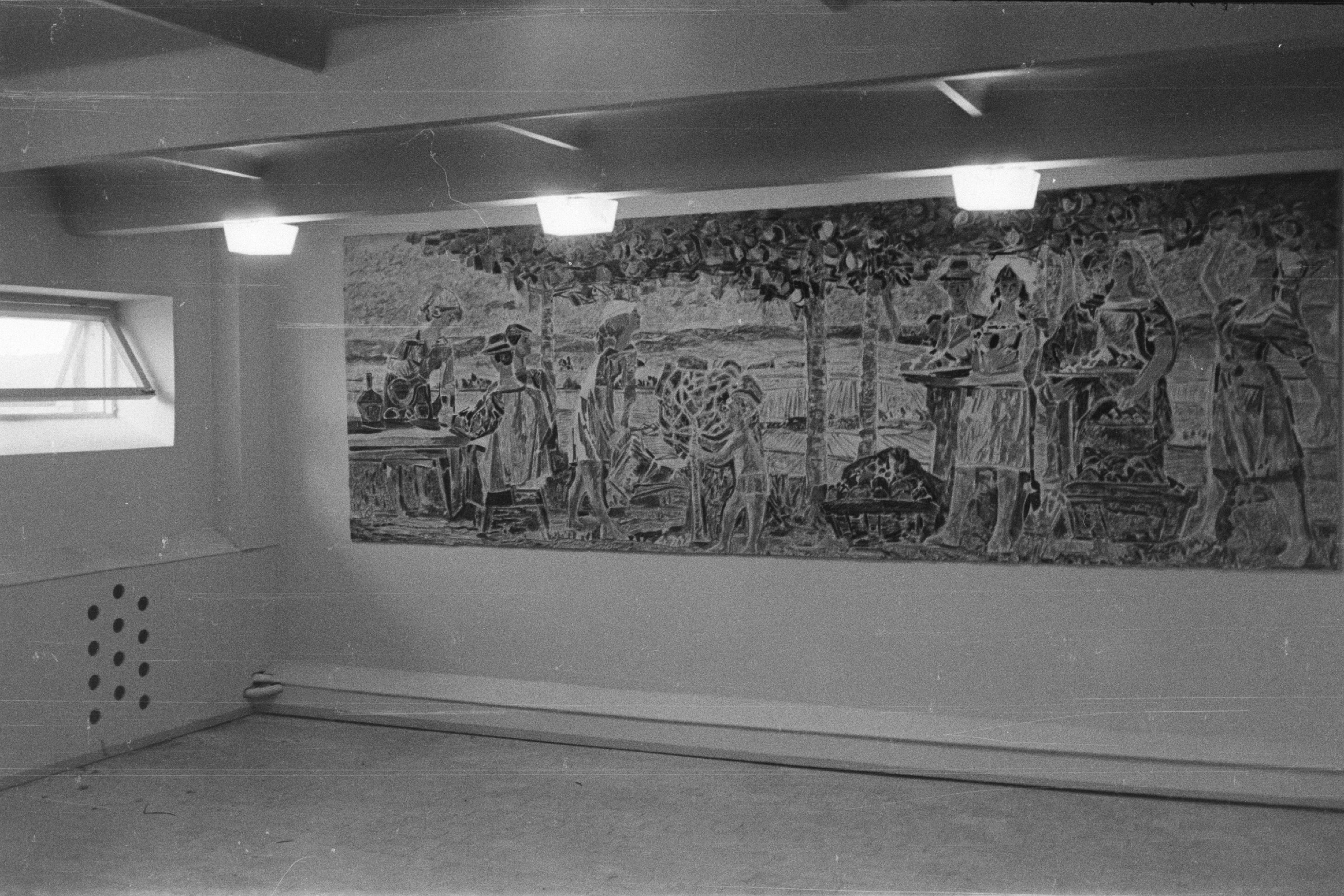Wall paintings Viljapõllul (“At the Grain Field”) and Õunaaias (“In the Apple Orchard”) at the Estonian Animal Breeding Association
Year of completion: 1969
Address: Rapla County, Kehtna Parish, Keava
Author Elmar Kits
Mixed media
Not under conservation as a cultural monument
Elmar Kits painted the decorative pannels depicting people with sheaves admiring plentiful fields, and women picking apples as a commission for the Kehtna collective farm. They were intended for decorating the collective farm’s cafeteria and café on the basement floor. The pannels were completed in 1969, three years before the artist’s death, and are full-fledged, ideal examples of Kits’s oeuvre. Painting technique-wise, Kits has added dimension similar to a sgraffito to enliven his piece, characteristic of his other artworks as well. The colours used are most likely oil tempera.
The building belonging to the collective farm was handed over to the Estonian Animal Breeding Association in 1976, and remain in their use today. In 2011, they turned to the Estonian Academy of Arts to restore the paintings in order to value them and introduce the local community to the famous artist’s pieces. During renovations in 2008, the pannels, already damaged by moisture, were covered with a protective varnish meant for use in saunas, to prevent further peeling of paint from the plaster. Although it was done with good intentions, the varnish layer unsuitable for the painting started darkening and its intense shine, which was in conflict with the essence of the paintings, was disturbing as well. The pannel Õunaaias (“In the Apple Orchard”) also displayed a larger reconstructed area done during a previous restoration. The most labour-intensive part of the conservation process was the removal of the layer of darkened varnish, which called for all of Rapla County’s rubbing alcohol, figuratively speaking. After removing the layer of varnish, the bright, light, and mild colours used by Elmar Kits when painting the pannels are visible once again.
Kits depicted blooming rural life in his artworks, and the current proprietor of the pieces, too, continues to be an advocator of agriculture. The cooperative looks after the fragment of art heritage that they own, and has helped a couple of high-level artworks see the light of day in both literal and figurative sense.
Merike Kallas, Hilkka Hiiop










